The world needs wild ideas. But every wild idea faces a road of obstacles to bring it to life. The hard work comes after the brainstorming rumpus when you have to bring others along.
Few of these obstacles are as rough as the devil’s advocate. IDEO founder Tom Kelley once called the devil’s advocate the single greatest threat to innovation:
“Devil’s advocates remove themselves from the equation and sidestep individual responsibility for the verbal attack. But before they’re done, they’ve torched your fledgling concept…
“What’s truly astonishing is how much punch is packed into that simple phrase. In fact, the devil’s advocate may be the biggest innovation killer in America today. What makes this negative persona so dangerous is that it is such a subtle threat…
“Because a devil’s advocate encourages idea wreckers to assume the most negative possible perspective, one that sees only the downside, the problems, the disasters-in-waiting. Once those floodgates open, they can drown a new initiative in negativity.”
This is exactly the uphill battle that Maurice Sendak faced with “Where the Wild Things Are”. When it was published in 1963, the book was hated by critics and banned in libraries. Wild ideas always attract naysayers. But wild ideas are the ones that make a dent. “Where the Wild Things Are” is one of the most awarded and influential children’s books in history.
Not all wild ideas are winners. And critical thought is essential to make ideas stronger. But too often wild ideas are smothered or diluted before they’ve really had a chance.
Here’s another tribute I drew to my hero Maurice Sendak two years ago.
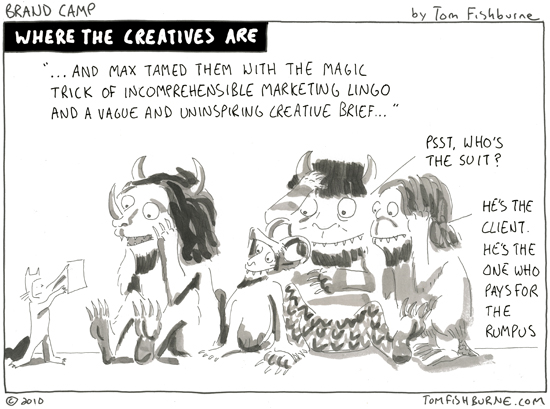
And another I painted nine years ago for my new daughter’s room.
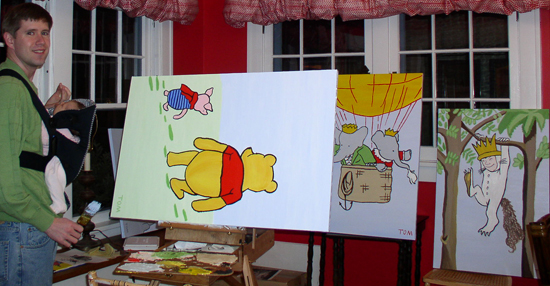
(Marketoonist Monday: I’m giving away a signed print of this week’s cartoon. Just share an insightful comment to this week’s post. I’ll pick one comment by 5:00 PST on Monday. Thanks!)
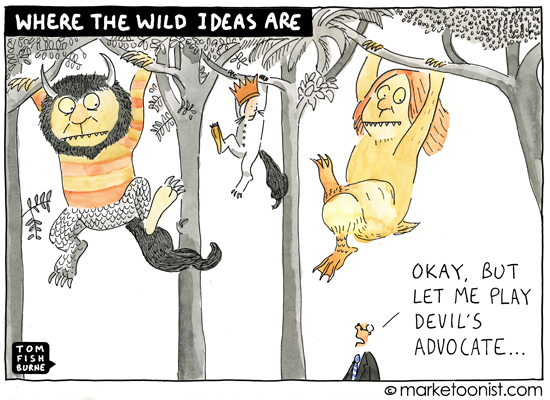
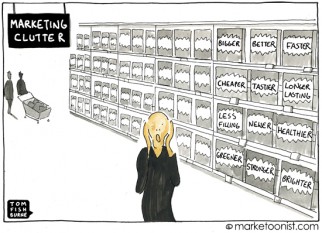
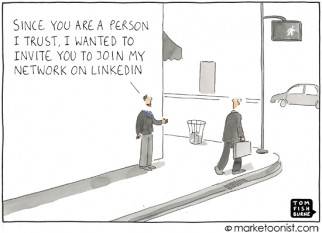
Aleem says
We have an increasingly standard response in our office and conversations when someone tries to open a sentence with “playing devil’s advocate”…
Which is, “Don’t. The devil has more than enough advocates.”
The prevalence for tearing down ideas is decreasing, along with the statement.
Matt says
Lovely tribute.
Donn says
RE: The Devil’s Advocate drawing:
Too often, it’s intellectually laziness that causes us to think of worst-case scenarios. Think: complaining is contagious and misery loves company. An idea that your drawing agce me was this: at my next brainstorming meeting (this week), I am going to have one extra chair at the table, with a name tent that says “Naysayer”. I’ll explain that we’re going to ignore this person during the brainstorming session and ask that each person share one thing a “naysayer” would say to extinguish ideas. Then, we’ll do the opposite and let any idea be represented without the voice of the Devil’s Advocate.
Thanks for the inspiration this week, Tom!
Rony says
The infamous “devil’s advocate” justifies his/her position by saying that he/she is just being prudent or responsible. While it IS responsible to consider the risk (downside), I suggest that it may be irresponsible to NOT consider the reward (upside). Sometimes you have to look at the “expected value” of both extremes associated with the risk and the reward to help you make a go/no go decision.
Ruth says
This is my second favorite post of yours! Even outside of the ideation arena, I’ve always had an aversion to people who claim to be playing the devil’s advocate. Have you ever noticed that people usually claim this after saying something rude, hurtful or to divide two good friends who had already agreed to disagree agreeably about something?
Bill Carlson says
All things in moderation…
Wild ideas and devil’s advocate thinking are both needed in proper balance. But this is a really subjective area — someone offering “critical thought” can look like a “naysayer” if you want them to.
We’re businesspeople — every idea, whether wild, new or mundane, should be scrutinized according to the level of opportunity vs. risk, and potential scenarios which would impact results should be explored. If it’s truly a good idea (regardless of wild, new, mundane), it will stand up to the challenges, and considering how to address negative possibilities makes the idea even better.
The problem here is that a wild idea being served up in purely conceptual terms triggers a whole debate about pros and cons based on “gut feel” and little data. So, get the idea out on the table, capture the reactions good AND bad, then task people to do the work though it MUST include “how we would respond to any of the issues we came up with.”
If a business case can be made, then make it. Be open to the potential negatives, address as many of those challenges as practical and the more that can be considered in advance, the less that’s left to the (negative) imagination. And less risk in deciding to proceed!
I would suggest, however, that the real topics here are corporate culture and leadership skills considerations. Companies have become risk-averse, for good reason, but need to become more open to properly-considered risks (beg for the wild ideas!). People in leadership roles need to pull colleagues positively through “point/counterpoint” discussions that benefit from (respect!) many views in an objective fashion. Less CYA, etc.
Being a “devil’s advocate” just for the sport of it is not a positive but an ability to recognize potential issues AND offer ideas about how to overcome them very much is!
Mike Moyer says
I wholeheartedly agree with Tom Kelly. I would rather be smacked in the head with a tack hammer than hear from a self-proclaimed “Devils Advocate”.
The problem is not that all ideas need proper vetting, it’s that a Devil’s Advocate responds to the suggestion of the idea before doing any actual thought.
Hooray Tom Kelly! Down with the Devil’s Advocate. Go back to HELL you idea-killing demon!
Scott says
The devil is the one who steals, kills and destroys. Why would we want his advocate in the room? Ideas are seeds, and they need the opportunity to grow. Not all of them will grow to maturity and bear fruit. But you can’t tell which ones will grow before you plant them, water them and give them a little time. Wisdom is knowing when to cut your losses on an idea that isn’t working, not killing an idea before it has a chance.
Jacqueline Beckley says
Marketoonist – you have really hit the spot with this observation and particularly with the recent passing of the creative Sendak. We just came back from an inspiring week of training some folks in Brazil. While there were others attending(people from Mexico and Italy) – the Brazil folks as a group brought passion and excitement. It became easy to see why the world is looking at Brazil today – the business people we were with were engaged and positive. And their president – the same. With that type of inspiration….one feels great and goes into the woods with joy and the spirit of winning! Thanks again for a great story.
Arun Prabhu says
What is even more dangerous about Devil’s Advocates is that they often believe that they are helping the innovation process!
Lori says
Great inspiration to start off my Monday– thank you! I didn’t know the history of the book, but I love the parallel between the critics that Sendak encountered when the book was published and the naysayers (or “idea killers,” as I like to call them) who restrict out-of-the-box thinking in new product development. A timely and lovely tribute to Mr. Sendak.
Sean says
I contest. A devil’s advocate is, canonically, the antithesis of a sage advocate: someone whose advice inhibits or confuses a decision rather than focusing it. A devil’s advocate does a lot of nay-saying, yes, but as a dedicated force sticking with an idea and continually pushing it against the general consensus, even arguing for points of an idea when general consensus turns negative. A good devil’s advocate will do an about-face and argue even against themselves if their own view is too readily adopted. A devil’s advocate should probably be locked out of final decision-making meetings once all the ~relevant~ risks and benefits are known, lest they persist in bringing up increasingly irrelevant ones and seeding doubt among the execs who need to sign off, but before that point it is very possible for a devil’s advocate to be a net-constructive force on a team willing to address concerns by fixing them rather than shunning them.
There are still individuals as Kelley describes who act to shut down ideas, but as described, their actions are much more unilateral and much more detached. They tend to be more often motivated more by an interest in asserting their subjective position and beliefs than in engaging actual issues. And they may very well claim “devil’s advocacy” when the rest of the room is for an idea, just because it appears to give them objective cover, and they expect the idea to die before they need to switch sides and defend it.
There is very much a place for a devil’s advocate in well-structured healthy innovation. In my experience as a multiply recognized leading innovator in my company, and active self-identifying devil’s advocate, I’d be more inclined to blame the culture when an idea fails. The devil’s advocate is only capable of single-handedly killing an idea when the established culture shuns adversity or risk; i.e. when an attack on one part of an idea is met with acceptance rather than solutions, when nobody wishes to defend an idea once it becomes “tainted” with uncertainty, or when ideas are so “owned” by individuals that they cannot be objectively criticized.
Jennifer Nelson says
A few years ago, when my oldest “baby” was a toddler, I picked up a dusty old copy of “Where the Wild Things Are” at a neighbors garage sale. It smelled faintly of mildew, which rendered unsaleable to all the others — but brought me back immediately to my own childhood and the great basement flood that landed my copy in the trash despite my pleadings and tears over 30 years before. Well, mildewy or not, I HAD to have this for my child. There are countless tributes to this great man and this great book and extensive literary dissections of it – so I will spare you all that but just offer this one take:
It wasn’t the bargain price of a dollar, but the priceless lesson of the conversion of anger and frustration into imagination and self-defined success that compelled me.
And how does this apply to business innovation? Wild new ideas do often trigger anger and frustration among members of an organization – both at inception and sometimes even more so if you get into execution phase(s). The devil’s advocate is the manifestation of this anger and frustration. Here’s my advice: don’t turn this him away, adopt him. You’re welcome to assume that ALL of the worst-case scenario won’t happen(I rarely hear of shark attacks during a tornado), but within his criticisms lies very real barriers to your subsequent success.
But most of all – don’t let the naysayer stop you – take in what he says (probe him for more!) and see if you can’t actually bring your fledgling idea to that much better a place as you genuinely consider and address weaknesses.
Mark Ralls says
Who would really like to speak for the devil anyway? Equally as dangerous is the person that only looks at worse case scenarios. Always pessimistic, always failure focused.
Allen Roberts says
The devils advocate should get out of the way, the Devil is doing just fine by himself!
Josh says
really nice drawing, tom
Kathryn Gorges says
Wild Ones embody that freedom from preconceptions — the beginner’s mind that is ever so precious in the world. The fresh approach or perspective on something everyone thinks they already know everything about. Truly valuing that means valuing the bit of wildness that comes with that mind: eccentricity, directness, persistent questioning, unpredictability, innocence, a belief in the possibility of personally making a difference, that discovery is everywhere.
The devil’s advocate ‘knows’ the truth already — they get power in the act of fitting things into what’s already known — because underneath they are truly frightened of what is unknown, untried, unthought, and untested.
Wildness is uncomfortable and unleashes the impossible — at the same time.
Perhaps a balance is sometimes needed — but as soon as you ‘balance’ the wildness it is lost…forever.
felicitee says
…I always have to ask “Devils Advoactes” so you want us to know whose side you are on then??
Personally I like deBono and the 6 hats – give a bit of time for a black hat and then its off limits.
Stephen Macklin says
A perfect illustration of why you should never invite legal to a brainstorm.
Mike says
I’m 40 and my boss is in his 30’s however I am the one with the wild ideas people like. Sometimes when I do them I get my hand slapped by Management but my users love what I come up with and that’s why I stay wild!
Thom I says
Absolutely, creativity without fear of what others think or even what you think is needed.
Drew says
I’m a fan of your stuff, Tom.
You’re right that Wild Things, and many other works we now enjoy, would not have ever existed if the legal & marketing “Devil’s advocates” had gotten to them. The most important distinction that you made, though, is that criticism and even naysaying are not evil things in and of themselves, but they can be stifling if introduced at the wrong time. First you need to get the ideas out there, and then be bold enough to subject them to some honest critical thinking. For every risk-averse executive who is eager to squash uncomfortable ideas, there is a creative who shuns feedback because they think every idea they have is the result of incorruptible genius. Both approaches are inadequate.
tomfishburne says
Hi all,
Wow, really wonderful commentary this week, and I loved hearing from both the supporters and the detractors of devil’s advocates. In developing ideas, there is room both for unbridled creativity and for critical thought. It’s that friction that makes ideas stronger, and how we manage that friction that determines whether ideas are polished or blunted in bringing them to life.
This week’s print goes to Bill Carlson who writes about the proper balance of wild ideas and devil’s advocate, and that the importance should be on the culture on managing both extremes. Potential issues should come hand in hand on ideas to overcome those issues.
Thanks,
-Tom
Jack Vinson says
There are proper times for the negative and the positive. If I’m in the right frame, the negative comments can be quite helpful. How might that negative thing arise in this situation? Is the situation such that the negative will happen, or is it one of those minute possibilities? If it might happen, we’d better come up with methods to reinforce our idea and prevent the problem. (And probably strengthen the idea.)
But if people are being negative without offering solutions or recommendations on how to help resolve them, then we are operating in a different circumstance.